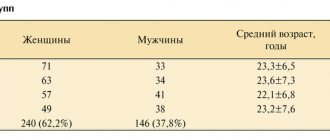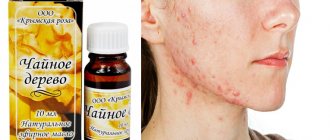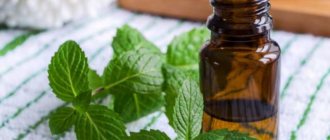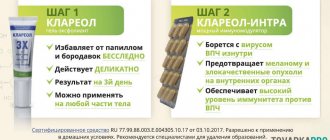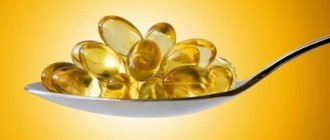Do the lungs recover after COVID-19? Yes. But you need to not miss the rehabilitation period and take the doctor’s recommendations seriously.
The new coronavirus infection caused by SARS-CoV-2 has not been well studied, but it is clear that it causes harm to all human organs and tissues. The virus enters the body through the mucous membranes of the nose, eyes, and pharynx. The first symptoms appear on days 2-14. Usually this is a fever above 37.5 degrees Celsius, a runny nose, loss of smell, dry cough, loose stools, weakness and headache. On days 6–10 from the onset of the first symptoms, shortness of breath, chest pain, and increased cough may begin to bother you. These are alarming symptoms that indicate lung damage and require additional examination: computed tomography of the lungs, measurement of blood oxygen saturation (saturation).
Lungs after COVID-19
Entering the human body through the mucous membranes of the respiratory tract, SARS-CoV-2 causes a powerful inflammatory reaction. Immune cells are activated and a colossal amount of inflammatory substances (inflammatory cytokines) are produced. The intensity of this reaction is most likely determined genetically. It is the intensity of the inflammatory reaction that determines the severity of damage to the lung tissue according to research data. In the lung tissue, damage during COVID-19 is caused both by damage to the alveoli themselves (in which gas exchange occurs and the blood is saturated with oxygen from the air) by our own immune cells and by damage to the pulmonary vessels that encircle the alveoli. The extent of lung damage can be determined using CT (computed tomography).
Table 1. Lung damage due to COVID-19
| № | Percentage of lung tissue damage | Manifestations | Hospitalization |
| 1. | 15 | Part of the lung is affected. Slight difficulty breathing. | Not shown. |
| 2. | 25 | Half of one lung is affected. There is difficulty breathing, but the person copes with the situation. | Treatment at home is possible. |
| 3. | 50 | One lung is turned off from breathing. Shortness of breath is noticeable. Active treatment is required. | The decision about hospitalization is made by the doctor. |
| 4. | 75 | Only half of one lung breathes. Severe respiratory failure. | Shown. |
Lungs may lose elasticity after COVID-19. The affected areas of lung tissue are replaced by connective (scar) tissue, and fibrosis occurs. Due to fibrotic changes in the lungs, the gas exchange function of the lung tissue suffers. There is no longer any inflammation, but respiratory failure remains. If measures are not taken during the disease itself, pathological changes in the lungs can remain for life. The person will be disturbed by:
- shortness of breath, worsening with physical activity;
- frequent dizziness;
- dry cough;
- chest pain;
- increasing weakness;
- decreased performance.
Sometimes the weakness is so severe that the ability to self-care is lost. To avoid these serious complications, it is necessary to carry out restorative measures - rehabilitation.
Principles of pulmonary rehabilitation after COVID-19
Rehabilitation begins 20–25 days after the onset of the disease, sometimes while still in the hospital. As soon as the acute process is over, the body temperature has returned to normal, an examination is carried out. It is clarified whether there is dysfunction of the kidneys, heart, blood vessels, or other organs. The lung recovery program after COVID-19 is developed individually. Taken into account:
- the severity of the coronavirus infection;
- the nature of viral pneumonia, the degree of lung damage;
- floor;
- weight;
- age;
- associated diseases.
The duration of rehabilitation is from 2 weeks to a year. It can go continuously or in courses of 10–14 days with breaks of 5–7 days. With minimal changes, breathing exercises, physical therapy, inhalations, massage, and physiotherapy are prescribed. Regime and nutrition play an important role.
Composition and beneficial properties
Wormwood is a medicinal plant that contains the following substances beneficial to the human body:
- resins;
- potassium salts;
- phytoncides;
- essential oils;
- tannins;
- vitamins A and B;
- organic acids and other natural compounds.
Useful properties of wormwood:
- anti-inflammatory;
- painkiller;
- healing.
The herb is used to treat various inflammatory processes and dermatitis, and is used in the fight against helminthic infestation. The plant is effectively used as a remedy that normalizes the functioning of the gastrointestinal tract, a sedative for the nerves, etc. In the treatment of HPV (human papillomavirus), all parts of the plant are used in the form of tinctures, decoctions, powders and medicinal baths. Wormwood removes warts absolutely painlessly; it has a gentle effect on the skin when used externally, and on the stomach (when taken internally).
General recommendations for lung rehabilitation after COVID-19
- Maintaining a daily routine, getting a full eight hours of sleep
- Moderate physical activity (10,000 steps per day - walks in the park, forest in dry and warm weather). On a cold, windy or rainy day, it is better to stay home. For a walk, dress according to the weather; shoes should be comfortable.
- Breathing exercises
- Daily wet cleaning and ventilation of the room.
- Refusal to visit the bathhouse or sauna. You should not take hot baths.
- Prohibition on drinking alcohol and smoking.
Nutrition for lung recovery after COVID-19
It is recommended to eat nutritious meals 5-6 times a day, in small portions.
Table 2. Required nutritional components
| № | Component | Product examples |
| 1. | Easily digestible protein | Chicken, turkey, young beef, cottage cheese, eggs. |
| 2. | Healthy fats | Sea fish, nuts, vegetable oils. |
| 3. | Alimentary fiber | Cereals, fresh vegetables and fruits. |
| 4. | Slow carbohydrates | Cereals, vegetables. |
| 5. | Probiotics | Fermented milk drinks, sauerkraut. |
| 6. | Iron | Parsley, beef liver, buckwheat. |
You need to drink 1.5–2 liters of water per day. Regular drinking water, fruit drinks, unsweetened compotes, and rosehip decoction are suitable.
Prohibited: “fast” carbohydrates - cakes, sweets, buns, fatty, hot, spicy foods, deli meats.
Wormwood essential oil
It is recommended to treat papillomas with wormwood essential oil until they disappear.
Plant ether is successfully used for cosmetic and medicinal purposes. It has many useful properties: kills bacteria and fungi, relieves inflammation, disinfects. With its help, bypassing a medical facility, you can get rid of papillomas, problematic nevi and boils. The oil acts gently and painlessly, allowing papillomas to resolve in a short time, without leaving any marks on the surface of the skin.
Application of oil
Ether is used internally and externally against warty growths. Directions for external use:
- treat new growths with oil using a cotton swab or swab;
- the treated areas are sealed with a medical plaster;
- the procedure is carried out 3-4 times a day;
- After 4-5 days the growths will dry out and then fall off completely.
Internal reception procedure:
- take ½ tsp. 3 times a day;
- The treatment course will last for at least 1 month.
How to make your own butter?
You can also make your own oil from wormwood to eliminate the papilloma virus.
Wormwood essential oil for papillomas is sold in any pharmacy; you can purchase it without a doctor’s prescription. If a person does not trust pharmacy, you can prepare ether at home yourself. A homemade option for preparing wormwood oil is presented in the table:
| Ingredients | Preparation | Application |
|
| Used for external and internal use |
Breathing exercises for lung recovery after COVID-19
Breathing exercises stimulate blood circulation, train the respiratory muscles, increase the elasticity of the lung tissue, and improve bronchial drainage. You need to perform gymnastics in a clean, ventilated room. Start with 30 seconds, gradually increase to a quarter of an hour. Overwork should be avoided. If you feel dizzy, take a break.
Preparatory exercises
- While lying on your back, inhale slowly for 3–4 seconds, then exhale the same slowly for 5–6 seconds.
- Diaphragmatic breathing, when the stomach “inflates” as you inhale.
- Slowly inhale air, slowly exhale through a straw into a glass of water, and relax. Repeat 2-3 times, gradually increase to 10 times.
Initial exercises
- Sit on a chair, press your back against the back of the chair, lower your arms down. As you inhale, gently raise your arms forward and then up. As you exhale, return to the starting position.
- The same exercise, only raise your arms up to the sides.
- Stand up, put your fingers on your shoulders. As you inhale, slowly spread your arms to the sides. Exhaling through your mouth, return to the starting position.
Basic exercises
Gymnastics by A. N. Strelnikova has proven itself well. It is difficult to master it on your own. It is necessary that the movements be shown by a person who knows the technique. Instead of this breathing exercise, your doctor may recommend another one.
Exercise to treat lungs after COVID-19
Exercise therapy strengthens muscles weakened by disease, stimulates blood circulation, and normalizes the nervous system. Gymnastics are performed after breathing training, at a slow pace. You need to place a chair nearby and hold the back of it with your hand to control your balance. The first part of each exercise is performed while inhaling, the second – while exhaling.
Sample list of exercises
- Rise on your toes, stand on your full foot.
- Bend your leg at the knee, lifting it up and lowering it. Then - the second leg.
- Take your leg back and return it to its place. Same with the second leg.
- Circular movements of the shoulders forward, then back.
- Take your right hand back, return to the starting position, then your left.
- Place your hands on your belt. Turn your torso to the right, then to the left.
- Lean forward 20–30 degrees, straighten up.
- Bend to the right, straighten up, then to the left.
Physiotherapy after coronavirus
Table 3. Popular physiotherapeutic procedures
| № | Name | Action |
| 1. | SMT therapy | Sinusoidal modulated currents eliminate bronchospasms and improve drainage. |
| 2. | Laser therapy | Improves blood circulation, has a resolving and anti-inflammatory effect. |
| 3. | Polychromatic polarized light | Accelerates the resorption of infiltrate, improves bronchial patency. |
| 4. | Magnetotherapy | Eliminates inflammation, swelling, pain. |
| 5. | Ultrasound therapy | Removes phlegm, prevents the development of fibrosis. |
Fibrosis – as a consequence for the lungs after COVID-19
Signs of pulmonary fibrosis on CT (computed tomography) indicate that part of the lung tissue is replaced by scar tissue. Fibrosis does not develop in a few days. This usually takes up to 6 months. Fortunately, fatal pulmonary fibrosis leading to severe respiratory failure is not common, and for most people who survive coronavirus infection, the remaining changes in the lungs will not affect their health. In most cases, a control study shows a clear positive trend. Signs of fibrosis decrease or disappear. Normal lung tissue is restored.
Therefore, it is so important to consult a doctor in time and begin proper treatment for COVID-19, which will help avoid serious complications and reduce the recovery time after lung damage from SARS-CoV-2.
Once fibrosis has truly formed, it is irreversible. In this case, doctors try to create optimal conditions for the functioning of the remaining lung tissue. This can often be done, since the compensatory capabilities of the respiratory system are great. But simple methods are not enough for this. It is necessary to involve serious therapy, including medications and respiratory support.
Methods for diagnosing giardiasis
Giardiasis has no specific symptoms, and its manifestations are varied. Therefore, a typical situation is when a person is treated by different specialists for different symptoms, but giardiasis remains undetected.
You should definitely get tested for Giardia in the following cases:
- with a tendency to intestinal diseases, as well as with their chronic course;
- with eosinophilia (the presence of an increased number of eosinophils in the blood);
- for allergic manifestations;
- in case of intestinal disorder acquired while traveling abroad, especially to southern and exotic countries;
- in case of neurotic symptoms, especially against the background of intestinal disorders.
Giardiasis is diagnosed based on laboratory tests. To diagnose giardiasis, the following are usually used:
Microscopic examination
The feces are examined for the presence of Giardia cysts, and the intestinal contents are examined for the presence of vegetative forms.
Serological blood test
Using a serological analysis, the presence of antibodies to Giardia in the blood is determined.
More information about the diagnostic method
Stool examination
An immunological test can detect a specific Giardia antigen in the stool.
Sign up for diagnostics To accurately diagnose the disease, make an appointment with specialists from the Family Doctor network.
Publications by doctors from the Family Doctor clinic on the topic “How to overcome post-Covid syndrome”
- Restoring the sense of smell after coronavirus
- Restoring memory after suffering from coronavirus
- Overcoming mental disorders during post-Covid syndrome
- Loss of smell due to COVID-19 - advice from an otolaryngologist
- Post-Covid screening - examination after a new coronavirus infection
- How to return digestion to normal after coronavirus?
- Recommendations from a cardiologist after suffering from COVID-19
- Coronavirus turned out to be “vindictive” - what is important to know
- We are experiencing COVID. How the coronavirus pandemic affects mental functioning
- Melatonin and COVID-19 - a cure for Trump
- Post-Covid syndrome: program for diagnosis and regression of post-Covid symptoms. How to Manage Long-Term Long COVID Symptoms
Contraindications
Before using a medicinal plant, you should consult a doctor, take into account contraindications and possible side effects. The most common contraindication for wormwood therapy is an allergy to the components in the plant. Some people cannot even stand its smell, starting to itch and sneeze. The herb is also contraindicated for people in the following cases:
- with gastritis with high acidity;
- stomach and duodenal ulcers;
- with anemia;
- during pregnancy and lactation;
- in children up to 12 years of age.
In the event that a person has no contraindications to wormwood, one must remember that the plant is poisonous and its correct use is required. In no case should you exceed the daily dosage of herbal medicine in pursuit of a quick result. Complications arise in the form of mental disorders, convulsions, dizziness and hallucinations. Therefore, it is important to adhere to the prescribed therapeutic course. Treatment with wormwood often gives good results, the main thing is regularity and the mindset to successfully get rid of papillomas.



